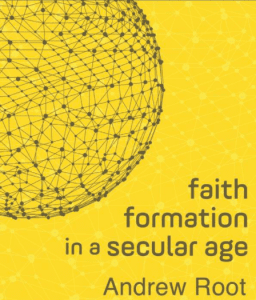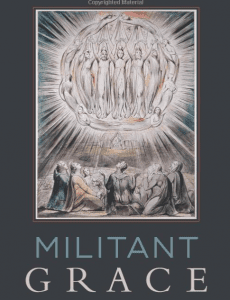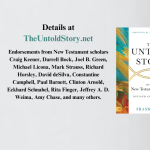What Christian Women Want, By Leslie Leyland Fields, editor of the recently released The Wonder Years.
How did Beth Moore stay silent for so long? Humility, perhaps? Grace? By now, many have read the popular Bible teacher’s “Letter to my brothers,” posted on her Living Proof Ministries Blog on May 4. Sadly, her account of the treatment she’s received over the last three decades at the hands of evangelical pastors and leaders is all too familiar. Women like me, who attend, speak and teach in conservative evangelical churches, are accustomed to the excesses of complementarianism, the teaching that men and women are equal but have distinct roles in the home and in church.
Over the last four decades, I’ve been involved in churches where women were not allowed to pray from the pulpit, to serve communion, even to take the offering. Young boys could pass the collection plate, but not women. Though these churches were more than 50% women, only one woman was allowed on the board—as a secretary. In one church, someone asked me one year to run for that position. I wondered how that would work. With three graduate degrees and some formal theological training, I would have been the most educated person on the board, but I would be relegated to recording the decisions of the men rather than participating in them.
Another board member conceded to me that a woman’s voice could be helpful when making important decisions because we were “emotional,” and possessed female intuition, which helped balance men’s reason. This narrative continues. Ann Voskamp writes recently of her son returning home from a meeting at church where these very words were spoken. And no one challenged them.
For decades, I sat under the Bible teaching of men in church who knew little about the basics of hermeneutics. I sat under a pastor who took off with his secretary one winter, leaving the church in shambles. I sat under a pastor who was arrogant and dismissive of women. I recently spoke at a Bible college on discipleship from a book I had authored. Despite the fact that the book had won a respected award, because I was a woman, male students could not attend my session.
All of this is routine for women in conservative churches. But I have not been called a heretic, as Moore has. I have not been routinely undermined by pastors. I have not generated the kind of vituperative spirit directed against Moore. In some ways we could shrug it off as the price of fame. But it’s far more.
Even as her letter circulated online, a seminary student who runs a website dedicated to theology and “discernment” chastises Christian leaders for giving her the “silent treatment.” Instead, “you should have been roundly and loudly rebuked by every one of them.” This student goes on to say, “You are utterly unqualified to do what you do.” He concludes his rant with these gracious words:
“God isn’t talking to you. Stop saying He is. You sound crazy. If he is, you’d likely not be such a horrible Bible teacher. Be Gone.”
There are arrogant nutters in every field, and theology has never been exempt, but what is particularly striking is the meanness and the personalness of the attack. How is it that some men with such a high view of scripture have such a low view of women? His response validates and illustrates the heart of Moore’s plea:
“I came face to face with one of the most demoralizing realizations of my adult life: Scripture was not the reason for the colossal disregard and disrespect of women among many of these men. It was only the excuse. Sin was the reason. Ungodliness.”
A number of pastors and leaders responded positively, even apologetically. Pastor J.D. Greer, who is expected to be the next Southern Baptist president, expressed gratitude for her words and reiterated “misogyny must have no place in our churches.” Pastor Thabiti Anyabwile, issued a public apology to Moore, confessing his failure to defend her when others questioned her credentials and reputation.
“I’ve been in rooms where your name was mentioned with disparaging tone. And rather than ask a few basic questions…I said and did nothing. I wasn’t any different from Saul standing by holding clothes while Stephen was stoned,” he said.
Perhaps the most striking response came from Andrew Walker, the director of policy studies for the Southern Baptist’s Ethics & Religious Liberty Commission: “What amazes me about our failure toward our sisters is that the expectation for us is not even extraordinary. It’s simple decency, kindness, and respect.”
But as hopeful as these responses are, this is not simply a matter of male leaders cleaning up their courtesy. There’s more at stake than good manners. There’s a darker shadow, I believe, behind the “colossal disrespect” accorded to Beth Moore. The larger issue concerns male leadership in the church. But it’s complicated, of course.
I believe there’s an assumption that theology belongs to the professionals, which is another way of saying that theology belongs to men. The great majority of seminary professors and seminary students are men. In 2013, women comprised just 20% of students in evangelical seminaries. Fewer women attend seminary for obvious reasons: Pastoral and ministry positions are less available to women in evangelical churches. How do you bear the cost of a seminary education when full time employment upon graduation is unlikely?
A seminary education is expected, even required for most pastoral and leadership positions. This is reasonable and good. I want my leaders and pastors to be educated in Hebrew and Greek. I want them to be knowledgeable in Church History. I want them to study textual criticism, all that they may “rightly divide the word of truth.” A few years ago I was one of a few who voted unequivocally against a pastoral candidate because he lacked seminary training and exhibited an ignorance of hermeneutics. But in professionalizing the pastorate and leadership positions, I wonder if we have prioritized education and theology over character. I wonder if we have privileged knowledge over humility and the fruits of the spirit. And I wonder if we have unfairly disadvantaged women, to our collective harm.
Enter the outliers. When women like Beth Moore, Ann Voskamp, Rachel Held Evans, Jen Hatmaker, and others outside of the academy gain international prominence for their Christian books and teachings, they’re suspect. Their theology and their character are ruthlessly scrutinized, particularly since, gasp! they don’t possess a seminary degree or hold an office within a church. Rachel Held Evans writes about her encounters with patronizing seminary students:
I am not criticized; I am “lovingly corrected.” We do not discuss where we agree or disagree; I am informed of what I got right and what I got wrong. It’s not a peer-to-peer conversation; it’s a session of “pastoral counseling,” initiated by a man who is not, in fact, my pastor.
Often and unfortunately these successful women are seen as rivals rather than as co-laborers. Yet when they began writing and teaching, they labored in obscurity, hoping not for fame and influence, but simply to be faithful to the gifts and calling they’d received from God. I count myself among them.
So here is what Christian women want: We want to partner with our brothers in Christ to follow Jesus as faithfully and as fully as we can. We want to fulfill the Great Commission given to all of us, “To go into all the world preaching the gospel, making disciples of all nations.”
I cannot claim that every woman’s motive is pure, nor can that be said of men, but even when men were preaching Christ “out of envy or selfish ambition” as others were doing while the apostle Paul was imprisoned, he rejoiced, because “The important thing is that in every way, whether from false motives or true, Christ is preached.” Are we rejoicing that “Christ is preached” by both men and women? Or are we wrestling jealously over gender and territory?
As I struggle to understand misogyny in the church, I have one more flickering light to shine on that shadow. I have argued before, in the context of transgenderism and LBGT rights, that the Church makes too much of gender. That we obsess over gender differences, gender roles and definitions of masculinity and femininity rather than moving together toward Christ-likeness. I make this argument again, but for different reasons. We’re living in the midst of unprecedented social shifts in men’s and women’s roles in the culture at large. Higher education and the work force were primarily the realm of men for centuries. Now women and men are equally represented in the work force, and women significantly outnumber men in higher education. In the recent Great Depression, women fared much better than men in both the workplace and education. Is it possible that these disorienting gender shifts outside the church are fueling the grip on gender roles inside the church?
And there’s part of the rub. Most of the popular authors and Bible teachers are functioning outside the church. They’re not operating under the authority of pastors and an ecclesial structure. Nor are these women observed in submissive roles to their husbands. Though their audiences and followers are almost exclusively women, I believe this makes some men dismissive, critical and anxious.
These days, I understand feelings of anxiety. Beth Moore’s candid account of decades of misogyny joins a discouraging lineup of news and headlines. Evangelicals are written off as a political lobby group rather than as a people committed to living out and sharing the good news of Jesus. Bill Hybels, one of the founders of Willow Creek and the godfather of the evangelical mega church movement, is deposed after a thirty year career of sexual allegations was brought to light. Paige Patterson, the president of Southwestern Baptist Theological Seminary is under fire for allegedly advising wives to remain submissive to abusive husbands. The #MeToo movement is joined by #ChurchToo, where we read distressingly of sexual abuse that has happened within our churches in recent decades.
I don’t always know how to respond to these issues. But I suspect they are not unrelated. I suspect that at their heart they are bound up in the dark desires of ambition, pride, and power. How easily we forget that the power of the gospel is the power to love, to relinquish, to serve, to lay down our lives for one another, men and women both.
My own story of sexism and struggle ends happily and more definitively. My family and I joined another church. A conservative church where men and women pray from the pulpit. Where men and women collect the offering together. Where men and women serve the elements of communion.
I cried often that first year. Not because I was a woman. Not because I was more emotional than men. Not because I was the “weaker vessel.” I cried because for the first time, I felt fully included in the body of Christ. I felt fully human. Whole. That’s all Christian women want.
 When the woman at the well asked Jesus how He was going to draw water from the well without a his own jar, He told her if she knew to whom she was talking, she’d ask for water from Him. His water, He said, is like wells of water that never run dry. In a country known for its deserts, that’s a tall promise.
When the woman at the well asked Jesus how He was going to draw water from the well without a his own jar, He told her if she knew to whom she was talking, she’d ask for water from Him. His water, He said, is like wells of water that never run dry. In a country known for its deserts, that’s a tall promise.

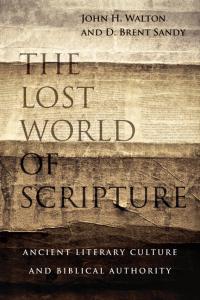
 Walton and Sandy (
Walton and Sandy (
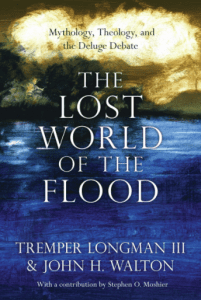 The next two propositions in The Lost World of the Flood by Tremper Longman and John Walton compare the flood story in Mesopotamian literature with the story found in Genesis 6-9. Outside of Genesis, there are several known versions of a flood story – Sumerian, Akkadian, and Babylonian versions. The flood is also referred to in the Sumerian King List where the succession is split into pre-flood and post-flood periods.
The next two propositions in The Lost World of the Flood by Tremper Longman and John Walton compare the flood story in Mesopotamian literature with the story found in Genesis 6-9. Outside of Genesis, there are several known versions of a flood story – Sumerian, Akkadian, and Babylonian versions. The flood is also referred to in the Sumerian King List where the succession is split into pre-flood and post-flood periods. The flood is depicted as having cosmic proportions and the telling uses universalistic rhetoric. Genesis is stronger in this regard than the Mesopotamian accounts. Tremper and John conclude: “The widespread nature of the destruction is indicated by the use of univeralistic rhetoric well-known for cataclysmic events, especially of a cosmic nature, in the ancient world.” (p. 71) The flood is longer in the biblical account than in the Mesopotamian accounts (forty days compared with seven days) but in all cases the numbers have rhetorical significance. They are not intended to convey specific details of an actual event.
The flood is depicted as having cosmic proportions and the telling uses universalistic rhetoric. Genesis is stronger in this regard than the Mesopotamian accounts. Tremper and John conclude: “The widespread nature of the destruction is indicated by the use of univeralistic rhetoric well-known for cataclysmic events, especially of a cosmic nature, in the ancient world.” (p. 71) The flood is longer in the biblical account than in the Mesopotamian accounts (forty days compared with seven days) but in all cases the numbers have rhetorical significance. They are not intended to convey specific details of an actual event. A real flood. John and Tremper are convinced that a real flood lies behind both the biblical and Mesopotamian accounts. This flood would have occurred some time prior to 3200 BC in a time when writing was only just beginning to emerge, perhaps around this time, but probably earlier. The similarities between the accounts reflect the common cultural knowledge of the event. To claim that Genesis simply borrowed from the Mesopotamian stories doesn’t do justice to the cultural environment of the ancient Near East. They conclude:
A real flood. John and Tremper are convinced that a real flood lies behind both the biblical and Mesopotamian accounts. This flood would have occurred some time prior to 3200 BC in a time when writing was only just beginning to emerge, perhaps around this time, but probably earlier. The similarities between the accounts reflect the common cultural knowledge of the event. To claim that Genesis simply borrowed from the Mesopotamian stories doesn’t do justice to the cultural environment of the ancient Near East. They conclude:

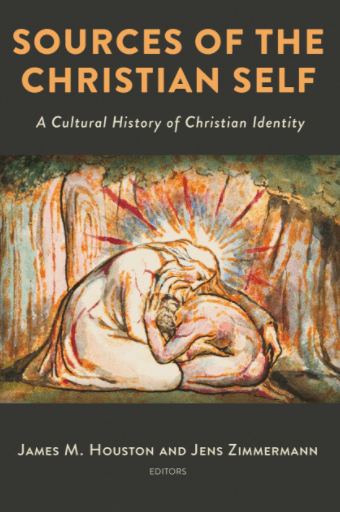
 John and Tremper point out that it is clear that the Bible does use hyperbole to describe historical events on occasion. It does so in a manner consistent with ancient Near Eastern practice. It does so to emphasize the important theological significance of the events being described. A prime example is found in the book of Joshua. Read the book straight through sometime. The apparent contradictions are obvious. (This is another example that I noticed when listening to Scripture on my commutes. It helped to shape my understanding of Scripture and inspiration. We have to let the Bible define what it means to be inspired – not impose some modern mold and bend the text to fit.) “If we read Joshua 1-12 as a straightforward, dispassionate report of the wars of Joshua, we would have to conclude that all Canaan was taken by the Israelites and not a single Canaanite survived unless they, like Rahab, came over to the Israelite side.” (p. 31) However Joshua 13 and following contradicts this view (as do Judges, Samuel, and Kings). The conquest of Canaan was not actually completed at this point or within Joshua’s lifetime. Nor were all the Canaanites obliterated. John and Tremper conclude with respect to chapters 1-12:
John and Tremper point out that it is clear that the Bible does use hyperbole to describe historical events on occasion. It does so in a manner consistent with ancient Near Eastern practice. It does so to emphasize the important theological significance of the events being described. A prime example is found in the book of Joshua. Read the book straight through sometime. The apparent contradictions are obvious. (This is another example that I noticed when listening to Scripture on my commutes. It helped to shape my understanding of Scripture and inspiration. We have to let the Bible define what it means to be inspired – not impose some modern mold and bend the text to fit.) “If we read Joshua 1-12 as a straightforward, dispassionate report of the wars of Joshua, we would have to conclude that all Canaan was taken by the Israelites and not a single Canaanite survived unless they, like Rahab, came over to the Israelite side.” (p. 31) However Joshua 13 and following contradicts this view (as do Judges, Samuel, and Kings). The conquest of Canaan was not actually completed at this point or within Joshua’s lifetime. Nor were all the Canaanites obliterated. John and Tremper conclude with respect to chapters 1-12: